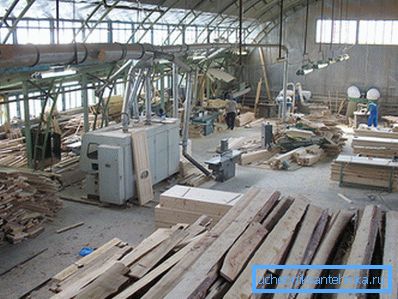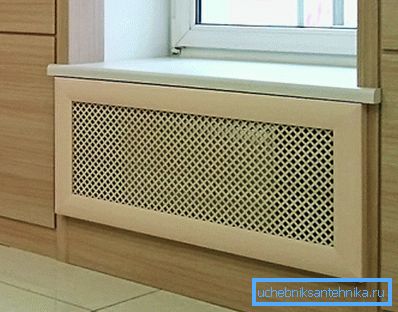Calculation of radiator power by area, volume and degree of
How to calculate the heating radiator power for a room with known parameters? Is the power of the heater always declared by the manufacturer as real? Can any factors affect the efficiency of the devices? Let's figure it out.

Heat demand
The calculation of the power of radiators in the apartment can be performed:
- In rooms with a standard for apartment buildings with a ceiling height (2.5 - 2.7 m) - over the area of the room that we are going to heat;
- With a higher ceiling height - on the heated volume.
In addition: a number of additional factors must be taken into account to achieve the maximum accuracy of the result. These include the number of windows, the glazing structure, the location of the apartment in the house (in the middle or on the periphery of the building), the thickness of the walls and the climatic zone.
Area calculation
The simplest calculation scheme for the area looks like this:
- On 1 m2 of area in the project 0.1 kilowatt of thermal power is laid;

- In cold or hot climate zones, a correction factor is used. Heat loss through the building envelope is linearly dependent on the temperature difference with the street.
Here are the coefficient values for different values of the average temperature of the coldest month of winter:
| Average January Temperature, С | Coefficient |
| 0 and above | 0.8 |
| -15 | 1.2 |
| -thirty | 1.6 |
| -40 | 2 |
So, for an apartment of 70 m2 in Yakutsk (the average January temperature is -38.6 ° C), you will need 70 * 100 * 2 = 14000 watts of heat.

The scheme is simple, but completely ignores a number of the listed additional factors. They are taken into account in the algorithm for calculating the thermal power by volume.
Calculation by volume
How to calculate the power of the radiator with a known volume of the apartment?
- 40 watts of thermal power is taken per cubic meter of volume;
- For rooms bordering the street, a factor of 1.2 is used; for extreme floors, 1.3;
- 100 watts is added to each window;
- The regional coefficient already given in the table above is used.
Specify the data of the previous settlement task: an apartment of 70 m2 has a ceiling height of 3.2 meters and 4 windows; It is located in the center of the building on the first floor.
- The volume of the apartment is 70 * 3.2 = 224 m3. The base heat output is 224 * 40 = 8960 watts.
- The first floor will force us to use a factor of 1.3: 8960 * 1.3 = 11648 watts.
- Windows will increase the already considerable need for heat: 11648+ (5 * 100) = 12148 watts.
- Finally, the invigorating 60-degree frost of January will also make its own adjustments: 12148 * 2 = 24296. It is easy to see that the difference with the first method of calculation is quite impressive.
Calculation by volume and degree of warming
The previous scheme is good for all but one: it is applicable only for the standard insulation of the external walls of the building, corresponding to the current SNiP. What if it is significantly better or worse?

In this case, the calculation instruction is reduced to using the formula Q = V * Dt * k / 860.
In it:
- V - cubic volume of the room;
- Dt is the difference between the thermometer readings in the apartment and on the street;
Note: the average temperature of the coldest five-day week is taken as the street temperature.
- k - the next factor depending on the degree of insulation of the building.
| Description of insulation | K |
| Foam or mineral wool wadding, energy-saving double-glazed windows | 0.6-0.9 |
| Brick or stone walls from 50 mm thick, single-chamber double-glazed windows | 1-1.9 |
| Thin wall masonry (in brick), single glazing | 2-2.9 |
| Lack of insulation (industrial buildings) | 3-4 |

Let's once again do our own hands to calculate the need for heat for our apartment in Yakutsk, using the new introductory:
- The average minimum of January is -41.5 С;
- The house is insulated outside and equipped with triple glazed windows (k = 0.8). All new homes in Yakutia correspond to this description.
The volume of the apartment we calculated earlier, it is equal to 224 m3. Dt at a room temperature of +22 C will take the value 22 - (-41.5) = 63.5 C.
According to our formula, Q = 224 * 63.5 * 0.8 / 860 = 13.2 kW.
Instrument power
How to calculate the power of a steel radiator heating or aluminum sectional battery?
- For convectors, panel radiators and other integral products of complex shape, you can only rely on the manufacturer's documentation. Characteristics of devices are always present at least on its official website.

- For sectional devices, in addition to the same data, you can focus on the following values:
| Radiator material | Heat flow, W / section |
| Cast iron | 160 |
| Bimetal (steel + aluminum) | 180 |
| Aluminum | 200 |
The calculation of the power of steel heating radiators from steel pipes (horizontal registers) can be performed according to the following algorithm:
- The heat output of the first section (bottom pipe) in watts is D * L * Dt * 36.5, where D is the outer diameter of the section, L is its length, and Dt is the delta of temperatures between the surface of the device and the air in the room.
Attention: all values are entered in SI units; in particular, the diameter is converted to meters.
- The heat output of subsequent sections is calculated with a factor of 0.9, since they are in a warm upward air flow.
So, for a four-section device with a section diameter of 108 mm and a length of 4 meters with +20 indoors and +80 on the register surface, heat transfer will be equal to 0.108 * 4 * (80-20) * 36.5 + 0.108 * 4 * (80-20 ) * 36.5 * 0.9 * 3 = 946 + 2554 = 3500 (rounded) watts.

It is curious: with the same overall dimensions, the steel register gives much less heat than an aluminum or bimetallic radiator. First of all, the low price is attractive in these devices: inexpensive VGP pipes are used as the material for their manufacture.
Limiting factors
In some cases, the actual power of the heating devices is noticeably less than the nameplate.
What can cause a decrease in efficiency?
- Reducing the temperature difference with air. Manufacturers indicate the characteristics of the devices for Dt = 70 C; when cooling the coolant or heating the air in the room, the effective power will decrease.
- Error in choosing the connection scheme. With a small (up to 10 sections) device length, it is preferable to prefer a side connection; with more sections - diagonal or bottom to bottom.
- Convection limitation. A variety of screens, niches and ducts can reduce heat transfer by 15 - 30%.

Conclusion
We hope that the above calculation schemes will help the reader to design effective heating for his own apartment. Additional thematic information can be found in the video in this article. Successes!